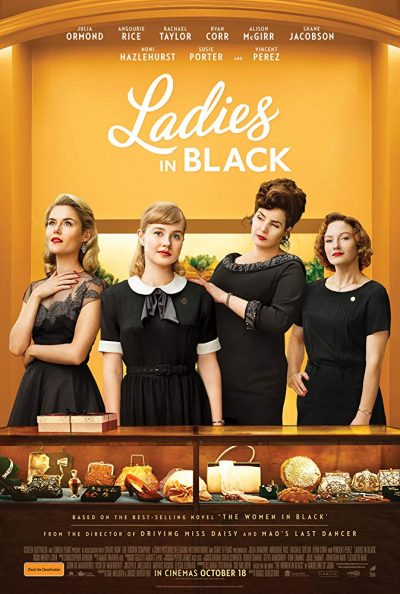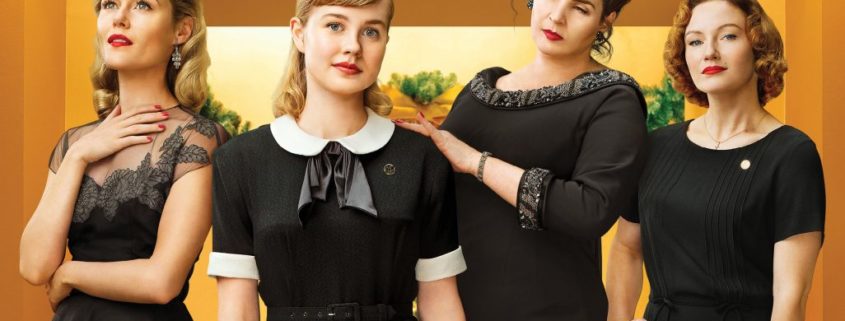Nostalgia and Sunshine: Bruce Beresford’s “Ladies in Black”. Sydney in 1959
Film Review

This effort seems to be a bit of camping out on the part of director Bruce Beresford, whose list of cinematic achievements include Driving Miss Daisy and Breaker Morant. There are many smiles, a few distributed tears and occasional sighs of regret, but generally speaking, little by way of controversial stings. Ladies in Black, in other words, is all entertainment punctuated by the enthusiastic retelling of sun-drenched stories that afflict the lives of women working in a Sydney department store.
The film, based upon the 1993 novel Women in Black by Beresford’s University of Sydney contemporary Madeleine St John, takes its audience to the Sydney of 1959, distant from the world and on the cusp of change. An insular Anglo-Celtic civilisation has become the home to various “reffos” (refugees, as they are locally termed), which becomes the shorthanded reference to all those of “Continental” background.
The scenes are charmingly executed, and beneath the shimmering and the handsome shine are those tensions that lay bare minor prejudices and major faults. This does not impress some of the critics, with Rebecca Harkins-Cross less charitable than most. “Beresford,” she writes stingingly in The Monthly, “is flogging a delusion of the egalitarian land o’plenty, where masculine cruelty is unconsciously writ by bumbling blokes, and xenophobia can be fixed by the discovery that salami is, of course, delicious.” But the film’s purpose is not to chide or reproach, nor plough the depths of sociological insight. It shows both the efforts on the part of those who found love and safe living away from conflict and the pains of post-war Europe and the response of careful, cautious accommodation on the part of Australians.
The reverse is only lightly touched upon: Australians yearning for cultural nourishment away from stifling wowserism, the tyranny of the dull and the pro-British apologetics of Prime Minister Robert Menzies. The latter particularly irritated historian Manning Clark, who described Menzies as “a tragedy writ large” in the service of “alien gods”.
This did not, as Gerard Henderson defensively wrote in 2011, trouble those immigrants who saw the Australia of the 1950s as far from boring. This, he suggested, was a confection of “the middle-class left-wing intelligentsia” and those irritating stone throwing academics tenured at tax payer’s expense.
Central to the cast is Angourie Rice’s Lesley (who prefers to go by the name of the unambiguously feminine Lisa), a voracious reader who takes time during the school holidays to be an temp at the fashion store Goode’s. Her encounter with Julia Ormond’s Magda leads to tender enlightenment. Being Slovenian, Magda wears her knowledge of fashion heavily on the subject of high end gowns, ultimately hoping to establish her own shop.

There are a few barbs directed at relations between the sexes. The Hungarian Rudi (Ryan Corr) is seeking an Australian flame to build his life with (she must be “strong and healthy”) and is happy to do his bit as a European Henry Higgins, educating any ignorant partner he might meet. Australian men are seen as gormless and bound to dash down to the pub after work for a brew while European men – the continental ones, that is – cook and have more than a passing acquaintance with music. Magda, for her part, is not impressed by Australian women, whom she regards as essentially untutored, the good ones having done the sensible thing in fleeing to London or Paris.
The cultural depictions are also delightfully striking. How an Australian Christmas is celebrated varies among the groups: such sweets as the lamington feature for the Anglo-Australians who spend time in the scorching outdoors; the Hungarian feast, held indoors, is replete with dishes of the old country paired with matching wines.
There are moments of incongruity wrapped inside a certain, sympathetic nostalgia. Lisa’s father (Shane Jacobsen), who labours in the printing presses of the Sydney Morning Herald, is congratulated by a crowd of fellow male workers about having a gifted daughter. (Her grades, being exemplary, do not quite sink into his conservative head.) One fellow worker professes to having two of his girls going to the University of Sydney and loving it. Lisa’s father, for his part, remains conventional, seeing tertiary education as fairly needless to a member of the fairer sex.
The general sentiment on refugees is a salutary reminder in the film that echoes Australia’s dramatically violent approach to certain new arrivals since the late 1990s. The policy of the Australian government during the 1950s, still governed by White Australia strictures, was to permit refugees from Europe, notably from southern and central Europe, from entering en masse. These, in time, formed a resilient backbone of industrial development. The modern approach stresses the penal over the constructive, the discriminatory over the progressive. While the film stresses the merits of those “reffos”, an alert audience will note the jarring contrast.
*
Note to readers: please click the share buttons above. Forward this article to your email lists. Crosspost on your blog site, internet forums. etc.
Dr. Binoy Kampmark was a Commonwealth Scholar at Selwyn College, Cambridge. He lectures at RMIT University, Melbourne. He is a frequent contributor to Global Research. Email: [email protected]

